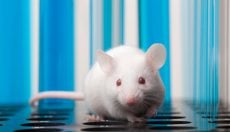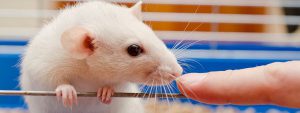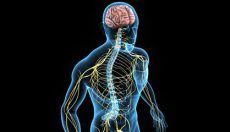Studying mice explains: how do we hallucinate?
Posted under: News and Science

Scientists at the University of Oregon say they’ve come a bit closer to understanding what happens in the brain when we hallucinate. All they had to do was trip out some poor mice.
Why mice?
Given that mice aren’t known for their sparkling conversation, you might assume that we couldn’t use them to study hallucinations. However, according to study author Cristopher Niel, a biologist at the University of Oregon, they can be an admittedly imperfect proxy for people.

The experiment
For their experiment, they dosed mice with a drug called 4-iodo-2,5-dimethoxyphenylisopropylamine (DOI).
What does this do to people? Well, DOI’s psychedelic effects are similar to those of LSD. But unlike LSD, it’s not a scheduled controlled substance in the U.S., making it easier for scientists to obtain and use in animal research.
Their findings, published Tuesday in Cell Reports, were somewhat surprising.
Rather than seeing frantic brain activity in the visual cortex, the area that processes the information the eyes take in, they found that the brains of tripping mice were actually taking in less information from the outside world, compared to a control group of mice.
Is what you see, what you get?
“There was this decrease in input to the visual cortex, so you can imagine it a bit like turning down the volume on your vision,” Niel said. “The way we think about vision is that it’s a combination of what’s actually out there—the photons hitting your eye—and also the interpretation of what you take in. But we think what’s going on here is that this decrease in visual input is leading to the brain misinterpreting or over-interpreting what’s actually out there.”

Niel pointed out that this misinterpretation by the brain routinely happens to us when there’s little or no visual information being taken in, such as when we’re dreaming or think we can see the faintest shadow of something creepy in the dark.
Given that psychedelic drugs are now being studied for their effects in treating depression and anxiety, that same knowledge could also help us gain insight into how these drugs interact with the brain.
More to discover!
Those are areas of research outside of Niel and his team’s direct expertise, though. And he’s quick to caution that his findings, even if they hold up in future studies, are only uncovering a piece of the brain circuitry that’s involved in visual hallucinations. Aside from suppressing neural activity in the visual cortex, for instance, they also found that the timing of when neurons fired was different in DOI-dosed mice. So there’s almost certainly more than one change going on in the brain when we visually hallucinate, and possibly in areas outside of the visual cortex.

“Really, what we want to do is figure out which circuits in the brain are being impacted,” Niel said. “
We want to go in and see where different types of neurons and different parts of the brain are being put together [while hallucinating].”
The team next hopes to use genetic manipulation to better study and isolate the circuits thought crucial to processing and interpreting vision.
Sources
- https://gizmodo.com/scientists-gave-mice-a-psychedelic-drug-to-figure-out-h-1833504178
- https://www.cell.com/cell-reports/fulltext/S2211-1247(19)30290-6



March 29, 2019